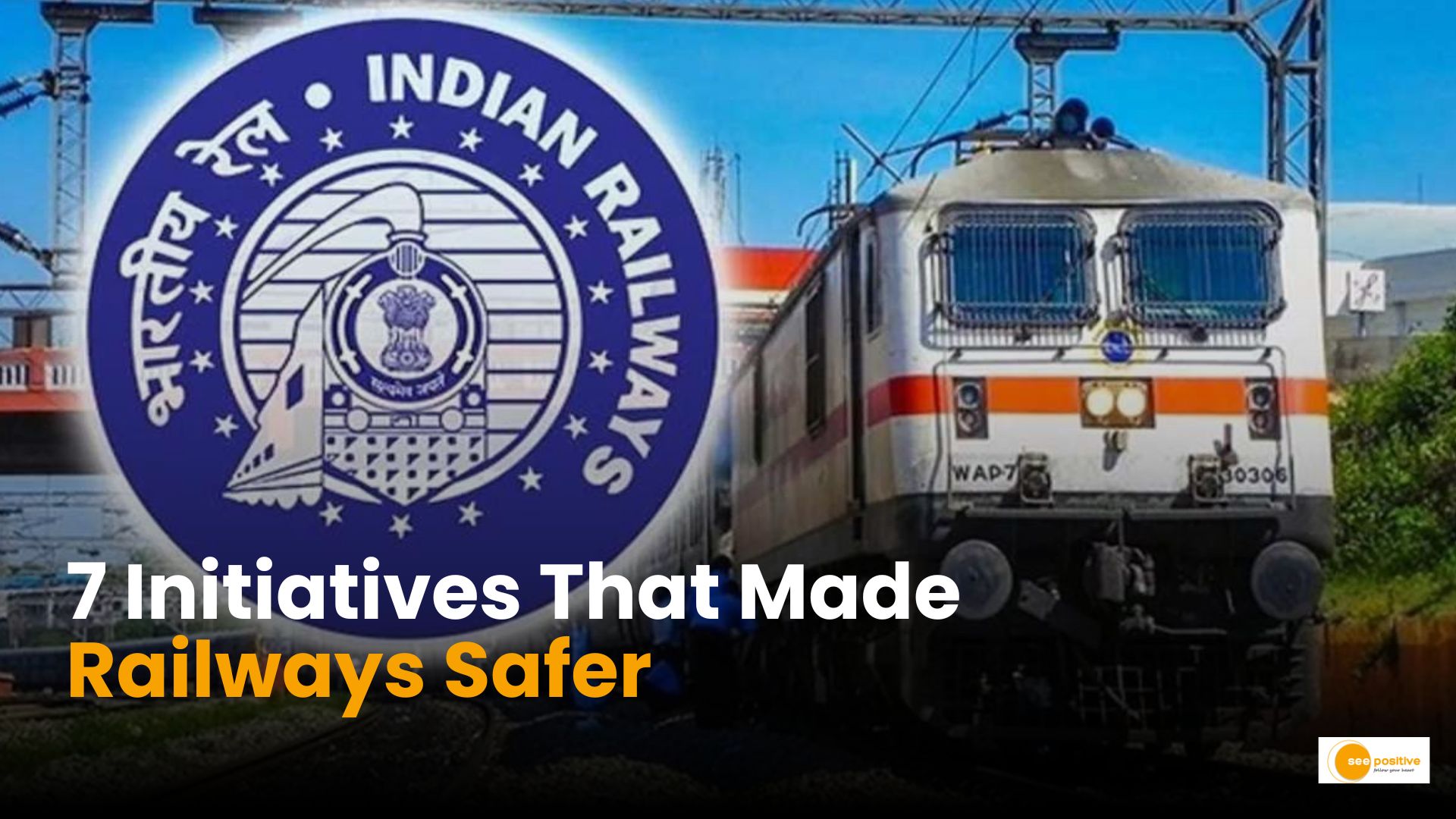The Indian Railways has always been the backbone of the nation’s transportation network, connecting the length and breadth of the country. However, ensuring the safety of millions of passengers who rely on this mode of transport daily is a monumental task. In recent years, several key initiatives have been implemented to enhance the safety standards of Indian Railways.
Here are seven important initiatives that have significantly contributed to making Indian Railways safer than before.
Rashtriya Rail Sanrakshan Kosh (RRSK)
Launched in 2017, the Rashtriya Rail Sanrakshan Kosh (RRSK) aims to replace, renew, and upgrade several safety assets of the railways. The initiative focuses on improving infrastructure and technology to prevent accidents. The gross expenditure on RRSK from 2017 to 2022 was Rs 1.08 lakh crore. Recognizing its importance, the government extended the scope of the system for another five years in the 2022-23 budget.
Key Features of RRSK:
- Comprehensive infrastructure upgrades
- Focus on accident prevention measures
- Significant investment in safety-related projects
Kavach: Indigenous Train Protection System
Kavach, an indigenously developed Automatic Train Protection (ATP) system, is a major technological advancement aimed at preventing train collisions. The system can automatically apply brakes if train drivers fail to do so, thus averting potential accidents. As of now, Kavach has been implemented on 1,465 Route Kilometers (RKMs) and 121 locomotives.
Key Features of Kavach:
- Prevents collisions by automatic braking
- Enhances driver response time
- Covers a significant portion of railway routes
Electronic Interlocking Systems
To improve the safety and efficiency of railway operations, more than 6,586 stations across India are now equipped with Electronic Interlocking (EI) systems. These systems ensure the safe interlocking of level crossing gates, reducing the risk of accidents. Moreover, all unmanned level crossings on broad gauge routes have been eliminated since 2019.
Key Features of Electronic Interlocking:
- Ensures safety at level crossings
- Eliminates human error in gate operations
- Streamlines train movements
Vigilance Control Devices (VCD)
All trains are now equipped with Vigilance Control Devices (VCDs) that ensure locomotive pilots remain alert throughout the journey. These devices monitor the activity of the pilots and can take corrective actions if necessary. Additionally, GPS-enabled fog protection devices are installed to assist drivers in areas with low visibility.
Key Features of VCDs:
- Monitors pilot alertness
- Enhances safety in low visibility conditions
- Improves overall train operation safety
Track Recording Cars
Track recording cars play a crucial role in ensuring the safety of railway tracks. These cars are used to check the fitness of tracks for operation and facilitate immediate repairs if any faults are detected. Ultrasonic trials are also conducted to detect defects in the tracks, ensuring timely maintenance and preventing accidents.
Key Features of Track Recording Cars:
- Regular monitoring of track conditions
- Immediate fault detection and repair
- Prevention of track-related accidents
Bridge Management System (BMS)
The Bridge Management System (BMS) is a web-based application that provides real-time information on the condition of railway bridges across the country. This system allows for continuous monitoring and maintenance, ensuring the structural integrity of bridges and preventing accidents caused by bridge failures.
Key Features of BMS:
- 24/7 monitoring of bridge conditions
- Timely maintenance and repairs
- Ensures structural safety of bridges
Online Monitoring of Rolling Stock Systems (OMRS)
The safety of rolling stock, which includes all railway vehicles, is ensured by the Online Monitoring of Rolling Stock Systems (OMRS). This predictive maintenance system helps in identifying potential issues before they become critical, thereby ensuring the safe operation of trains.
Key Features of OMRS:
- Predictive maintenance of railway vehicles
- Early detection of potential issues
- Ensures continuous safe operation
Positive takeaway
The Indian Railways has made significant strides in enhancing safety through these innovative and impactful initiatives. By investing in advanced technology and infrastructure, Indian Railways continues to prioritize the safety and well-being of its passengers. As investigations into accidents like the Kanchenjunga Express collision continue, these initiatives underscore the ongoing commitment to making train journeys safer for everyone.


